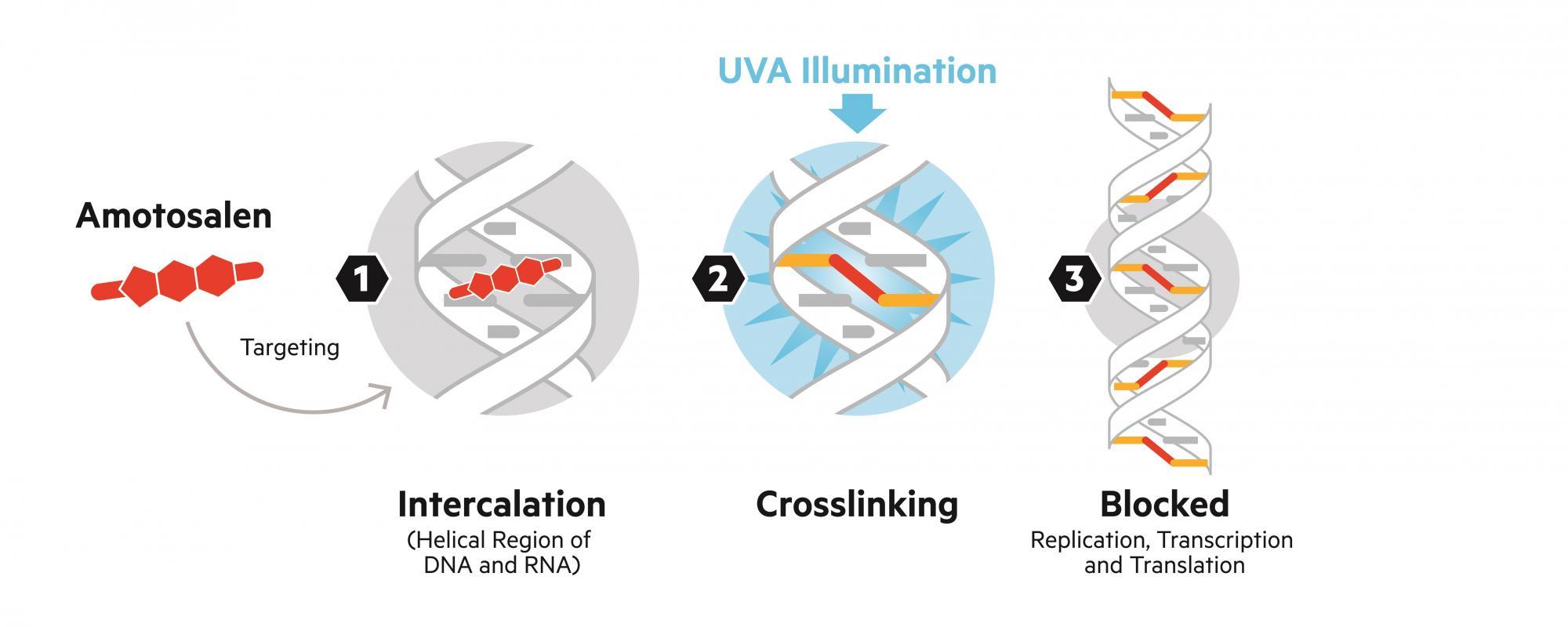This site provides INTERCEPT product information for International audiences Select your region
Amotosalen has a very high specificity for nucleic acids. It has minimal interaction with proteins or other cellular components, so that the functional properties of blood components are preserved.
Amotosalen is highly water soluble and can quickly pass through cellular membranes, bacterial walls and viral envelopes. After entering the cell, the structure of amotosalen remains unchanged, making it exceptionally well suited for the inactivation of intracellular pathogens.
Amotosalen has no sequence specificity, so it is efficient for the inactivation of a broad spectrum of pathogens.
The high frequency of interaction between amotosalen and the pyramide bases renders the replication and transcription of genes impossible, and inhibits the DNA repair mechanisms of pathogens.
In addition, the amotosalen-nucleic acid cross-linking occurs in the presence of UVA light, but not in its absence. This represents another unique safety measure as the reaction can be tightly controlled ex vivo simply by turning the light source on or off.
The illumination device has been specifically designed to allow only UVA light to illuminate the blood components, as it is reported that light of shorter wavelength like UVB or UVC has a detrimental effect on platelets and proteins through the generation of active oxygen species1.
By using UVA light only, platelet concentrates require no protection against visible light after completion of the illumination step.
Source:
1.Irsch et al. Transfusion Medicine and Hemotherapy 2011; Vol. 38, Issue 1, page 19-31


